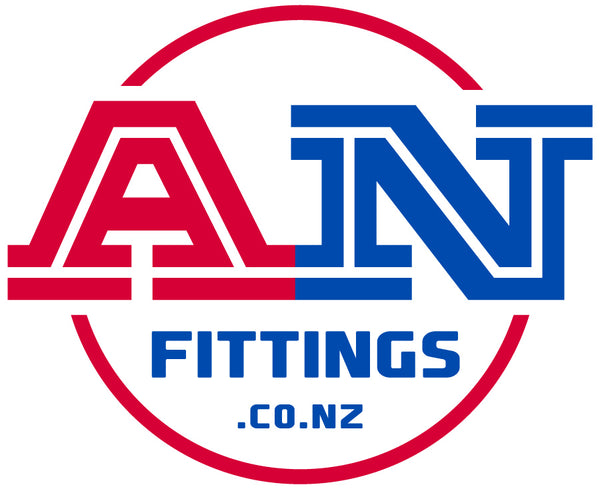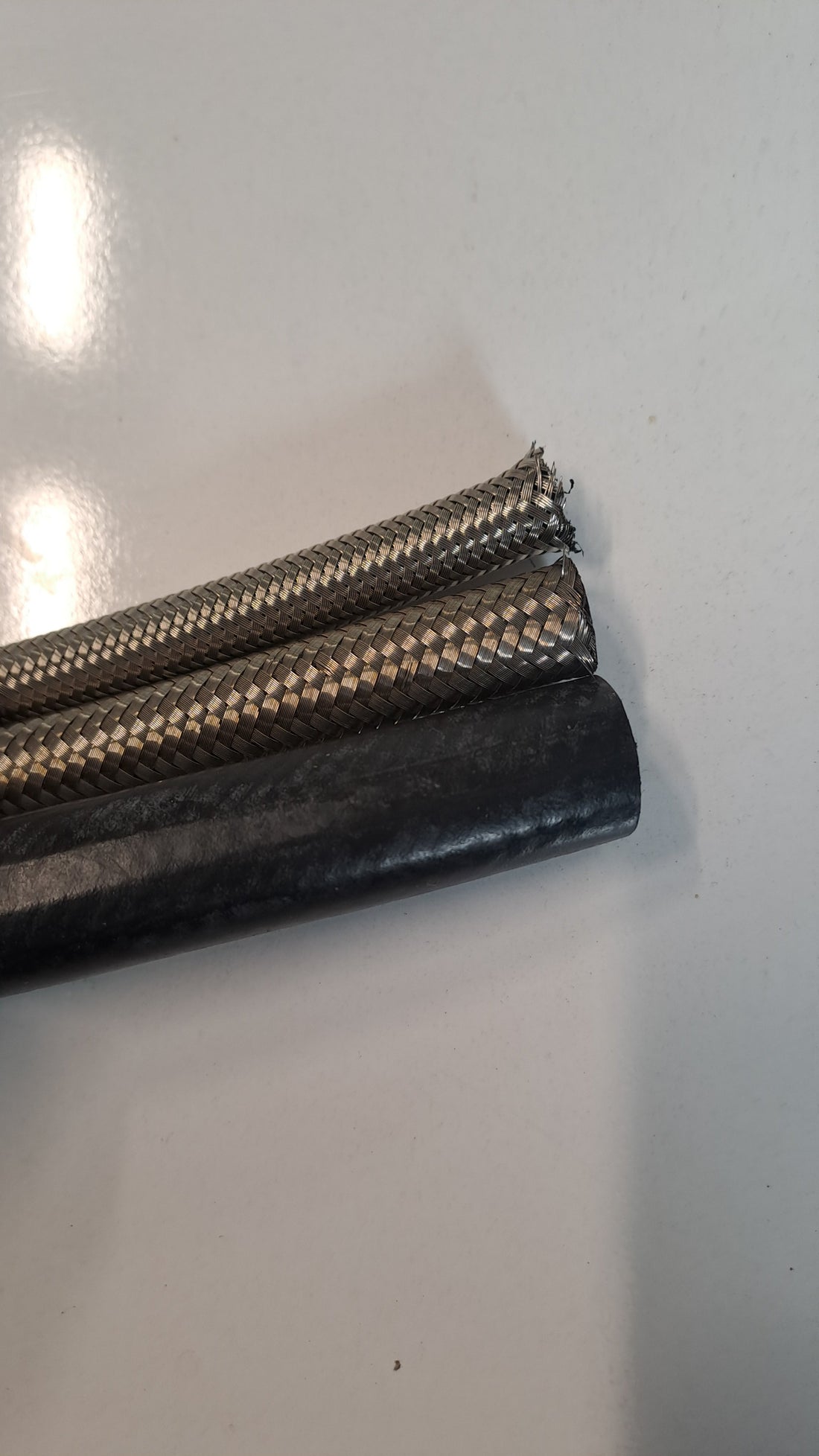Stainless Braided Hose vs Push-Lock – Which Should You Use?
When you’re plumbing a fuel system, oil cooler, or power steering setup, the fittings you choose make all the difference. Reliability, safety, and ease of assembly are key — and not all fittings are created equal. Three of the most common options are Stainless Braided Hose rubber inner (100 series), Stainless Braided Hose Teflon inner (200 series) or push-lock fittings. Let’s break down the differences, where each works best, and which one you should use.
🔵 Stainless Braided Hose rubber inner
What they are: 100 series
Originally developed by the US Army-Navy (hence “AN”), these precision-machined fittings use a 37° flare to create a secure, leak-free seal. They are widely used in motorsport and performance applications.
Pros:
Strong, reliable, leak-resistant
Available in a huge range of sizes (AN3–AN20)
Perfect for high-pressure oil, coolant, and brake systems
Long-lasting
Cons:
More expensive than push-lock or barb fittings
Require proper tools to assemble (vice jaws, spanners, hose cutters)
Best for: High-performance builds where safety and reliability are non-negotiable.
🔴 Stainless Braided Hose – Teflon/PTFE Inner
What they are: 200 series
Lightweight, high-performance hose assemblies that use Teflon®-lined inner cores and stainless steel outer braids. These hoses were developed to meet strict requirements in aerospace, motorsport, and other high-performance environments.
Pros:
Available in a range of sizes (AN3–AN 12)
Perfect for high-pressure fuel, oil, coolant, and brake systems
Reusable due to the olive and long-lasting
Superior chemical resistance
No fuel or vapor permeation
Resistant to aging and weathering
Operates at higher temperatures
Longer service life
Cons:
Less sizes than 100 series
Require proper tools to assemble (vice jaws, spanners, hose cutters)
Best for: High-performance builds where safety and reliability are non-negotiable.
What they are:
Push-lock fittings allow you to simply push a compatible hose onto the fitting — no clamps required. The hose locks in place thanks to the fitting’s barbed design.
Pros:
Quick and easy to assemble
No special tools needed
Great for low to medium pressure applications
Cons:
Limited pressure rating compared to AN
Hose ends may loosen if not matched correctly
Not ideal for all fuels and oils (must check hose compatibility)
Best for: Vacuum lines, low-pressure fuel return lines, breather hoses, or temporary setups.
⚖️ Which Should You Use?
For race cars, high-performance engines, or where safety matters most → AN fittings.
For quick jobs, breathers, or low-pressure lines → push-lock fittings.
If you’re building a fuel system or oil setup that needs to handle pressure and heat reliably, AN fittings are the gold standard. Push-lock and barb fittings have their place, but when in doubt, go with AN — you’ll thank yourself later.
✅ At anfittings.co.nz, we stock a wide range of Speedflow AN fittings, hoses, and accessories to suit everything from street cars to full race builds.

